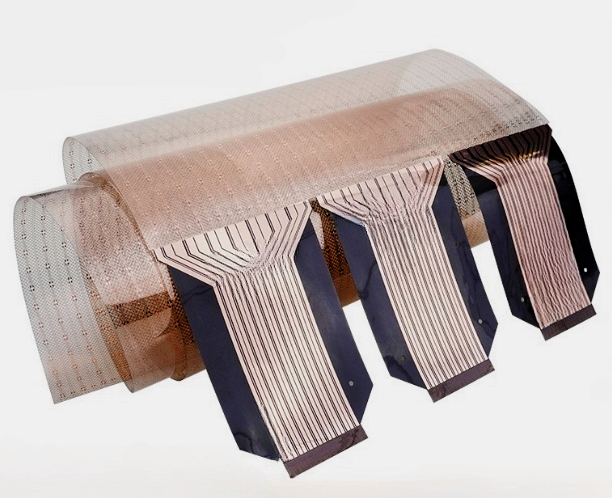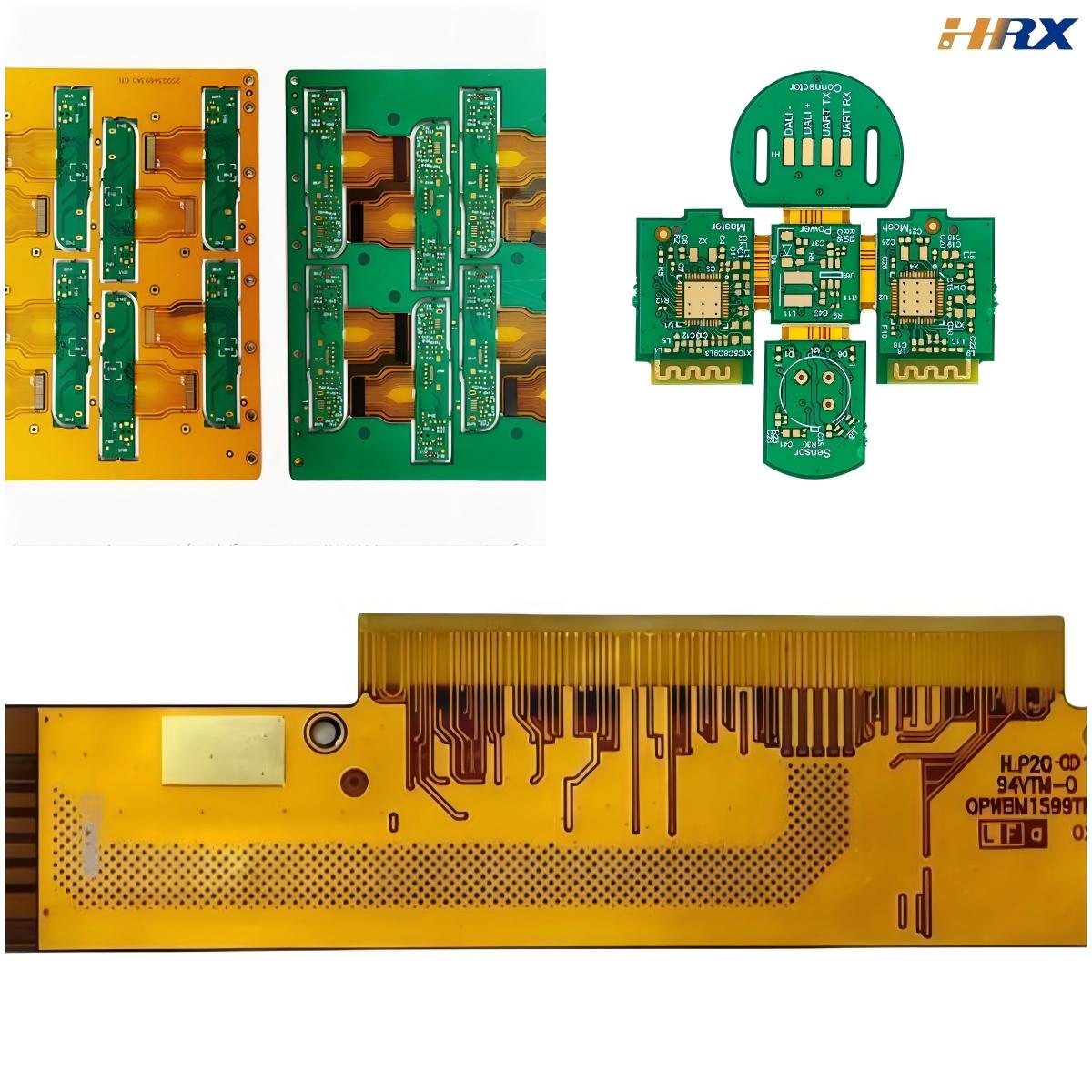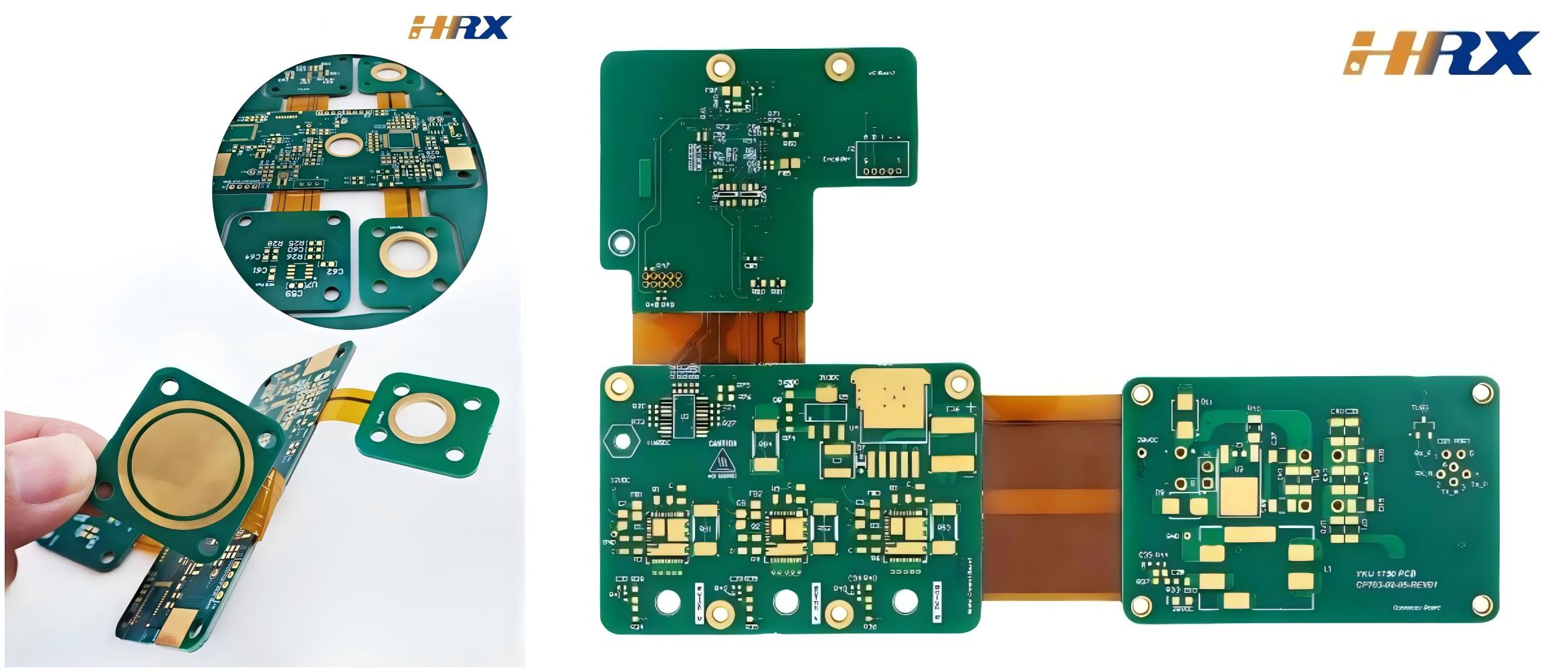Search
FPC in the Connector Field: Applications, Emerging Market Impacts, and Design/Production Insights
- Apr 29,2025
-
Share
As Shenzhen Huaruixin Electronics Co., Ltd., a leading global ODM/OEM manufacturer specializing in the design, development, and large - scale production of Flexible Printed Circuits (FPC), Printed Circuit Boards (PCB), and Rigid - Flex Printed Boards, we possess in - depth expertise in the pivotal role of FPCs within the connector landscape and the far - reaching influence of emerging markets on interconnect solutions.

I. Applications of FPC in the Connector Field
A. Consumer Electronics
In the ever - evolving domain of consumer electronics, FPC connectors have become indispensable components. For example, in smartphones, Zero Insertion Force (ZIF) connectors, a type of FPC connector, are commonly utilized to establish connections between the Liquid Crystal Display (LCD) or Organic Light - Emitting Diode (OLED) panels and the main PCB. This enables seamless transmission of electrical signals, facilitating vivid image display. With the continuous trend towards miniaturization and ultra - thin designs in smartphones, FPC connectors shine due to their inherent flexibility and exceptional ability to endure repeated bending and stretching. They can be intricately routed through the confined spaces within a smartphone, connecting critical components such as the camera module, touch - screen controller, and fingerprint sensor to the motherboard.
The same principle applies to tablets, laptops, and wearable devices. In smartwatches, Flexible Flat Cables (FFC), a subtype of FPC, play a crucial role in linking the small - sized display, battery, and an array of sensors. Given the extremely limited space in these devices, FPC connectors' flexibility allows for efficient use of available real - estate, ensuring reliable connectivity while adhering to strict size constraints.
B. Automotive Electronics
The automotive industry has also witnessed a significant adoption of FPC connectors. These connectors are widely used in automotive infotainment systems, where they connect high - resolution display screens to powerful control units, enabling immersive in - car entertainment experiences. Additionally, FPC connectors are integral to automotive sensor networks, including Tire Pressure Monitoring Systems (TPMS) and airbag sensors.
In the automotive environment, FPC connectors must meet stringent requirements due to harsh operating conditions, including extreme temperature fluctuations, constant vibrations, and potential electromagnetic interference. To address these challenges, FPC connectors are often designed with advanced shielding features, ensuring electromagnetic compatibility (EMC) and maintaining signal integrity even in the most demanding scenarios.
C. Medical Devices
Medical devices demand highly reliable and miniaturized interconnect solutions, and FPC connectors fit the bill perfectly. They are extensively used in portable diagnostic equipment, where they connect various sensors to processing units, enabling accurate and real - time data collection. In endoscopic devices, the flexibility of FPC connectors is a game - changer. It allows for seamless connection between the imaging sensor at the tip of the endoscope and the control unit, facilitating the transmission of high - definition images while withstanding the complex bending and twisting motions during medical procedures.
II. Impact of Emerging Markets on Interconnect Solutions Development
A. Increasing Demand for Cost - effective Solutions
Emerging markets, such as those in Southeast Asia, Africa, and parts of South America, present a vast consumer base with a strong preference for cost - effective products. This growing demand has spurred the development of budget - friendly FPC connectors without compromising on performance. Manufacturers are exploring alternative materials, such as lower - cost yet high - quality polymers for the flexible substrate, and optimizing designs to reduce material waste. For instance, innovative manufacturing techniques are being employed to create FPC connectors with minimized footprint, thereby reducing material usage while maintaining essential electrical and mechanical properties.
B. Need for Customization
These emerging markets also exhibit diverse requirements influenced by local applications and usage patterns. This has led to an increased demand for customized interconnect solutions. In regions where mobile devices are frequently used in outdoor settings, FPC connectors may need to be enhanced with ruggedized features, such as waterproof and dust - proof coatings. Manufacturers are investing in research and development to create specialized FPC connectors that can withstand these unique environmental challenges, ensuring long - term reliability and performance.
C. Growth of the Internet of Things (IoT)
The rapid proliferation of the Internet of Things (IoT) in emerging markets is driving a surge in demand for high - performance interconnect solutions. FPC connectors are essential for IoT devices, which are often characterized by their small form factor and need for flexible and reliable connections. With the widespread deployment of smart home devices, environmental sensors, and industrial IoT sensors, there is an escalating need for high - density FPC connectors capable of handling high - speed data transfer and power transmission requirements. This trend is fueling innovation in FPC connector design, with a focus on improving signal integrity, reducing power consumption, and increasing connectivity density.
III. Design and Production Experience of FPC in the Connector Field
A. Design Considerations
Signal Integrity
In the design of FPC connectors for high - speed applications, such as 5G communication devices and high - performance computing systems, signal integrity is a top priority. Our design team meticulously optimizes the layout of conductive traces on the FPC, taking into account factors such as trace width, spacing, and impedance matching. Differential signaling techniques are often employed to minimize signal interference and ensure accurate data transmission at high speeds. Additionally, advanced simulation tools are utilized to predict and mitigate potential signal integrity issues, ensuring that the FPC connectors meet the stringent requirements of modern high - speed applications.
Mechanical Durability
Given the frequent bending and twisting that FPC connectors may endure in various applications, mechanical durability is a critical design factor. We source high - quality polyimide materials for the flexible substrate, renowned for their excellent flexibility, high tensile strength, and resistance to fatigue. Furthermore, we incorporate innovative stress - relief features, such as rounded corners and reinforced connection points, to distribute mechanical stress evenly and prevent premature failure. Rigorous mechanical testing, including bend - cycle testing, is conducted to ensure that the FPC connectors can withstand the expected mechanical stresses over their intended lifespan.
Miniaturization and High - Density Packaging
To keep pace with the trend of miniaturization in electronic devices, our design efforts are focused on developing FPC connectors with smaller footprints and higher pin densities. This requires the use of advanced manufacturing technologies, such as fine - pitch lithography and laser direct imaging, to create ultra - narrow conductive traces and closely spaced pads. By leveraging these cutting - edge technologies, we are able to meet the increasing demand for compact and high - performance FPC connectors in a wide range of applications.
B. Production Process
Quality Control
Quality control is an integral part of our production process. We implement a comprehensive quality management system, incorporating automated optical inspection (AOI), X - ray inspection, and electrical testing at multiple stages of production. AOI systems are used to detect any surface - level defects, such as open circuits, short circuits, or misaligned traces, while X - ray inspection helps identify internal defects that may not be visible on the surface. Electrical testing ensures that the FPC connectors meet the required electrical specifications, including insulation resistance, contact resistance, and signal transmission performance. By maintaining strict quality control measures, we are able to deliver high - quality FPC connectors that meet or exceed customer expectations.
Advanced Manufacturing Techniques
Our large - scale manufacturing base is equipped with state - of - the - art production equipment and advanced manufacturing techniques. We utilize laser ablation for precise hole drilling in the FPC, enabling the creation of high - aspect - ratio vias with excellent dimensional accuracy. Surface - mount technology (SMT) is employed for the efficient and reliable attachment of components, ensuring high - quality assembly. Additionally, we continuously invest in research and development to adopt the latest manufacturing technologies, such as additive manufacturing and roll - to - roll processing, to improve production efficiency and product quality.
Supply Chain Management
Efficient supply chain management is crucial for ensuring the smooth production of FPC connectors. We have established long - term partnerships with reliable suppliers of high - quality raw materials, including copper foils, adhesives, and insulating materials. By closely monitoring market trends and maintaining strategic inventory levels, we are able to respond quickly to fluctuations in demand and ensure a stable supply of raw materials. Our supply chain management system also incorporates strict quality control measures for incoming materials, ensuring that only the highest - quality components are used in the production of our FPC connectors.
In conclusion, the FPC connector market is experiencing rapid growth and transformation, driven by diverse applications across multiple industries and the dynamic influence of emerging markets. At Shenzhen Huaruixin Electronics Co., Ltd., our extensive experience in FPC design and production, combined with our commitment to innovation and quality, positions us as a trusted partner in the global FPC connector industry. We warmly invite new and old friends to engage in technical exchanges, knowledge sharing, and collaborative innovation. Together, we can explore new frontiers in FPC technology and drive the development of next - generation interconnect solutions.

Let’s talk! We’ll provide the perfect solution for you!
-
 Huaruixin Electronics mainly produces printed circuit boards as the core business, to provide customers with one-stop solutions for FPC/PCB production, components sourcing and Assembly.
Huaruixin Electronics mainly produces printed circuit boards as the core business, to provide customers with one-stop solutions for FPC/PCB production, components sourcing and Assembly. - WHAT WE DO — PCB Design Solutions — Flex PCB Production — Components Sourcing — FPC&PCB Assembly
- PRODUCTS — Single Sided Flexible Circuits — Double Sided Flexible Circuits — Multilayer Flexible Cirucits — Rigid-Flex Circuits — FPC Assembly — PCB Assembly
- CAPABILITY — FPC Capability — Rigid-Flex Capability — PCB Capability — Assembly Capability
- Copyright © 2024 Shenzhen Huaruixin Electronics Co., Ltd. All Rights Reserved.
- Design By BONTOP


